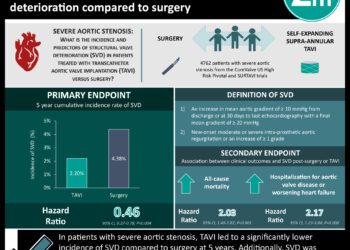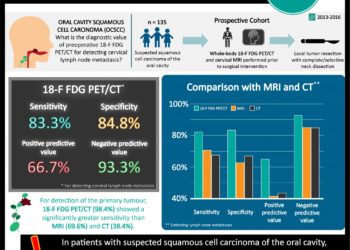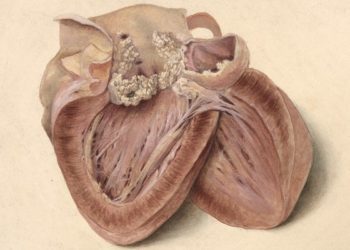FDG-PET scanning demonstrates prognostic significance in prosthetic valve infective endocarditis
1. 18F-fluorodeoxyglucose positron emission tomography/computed tomography (FDG PET/CT) findings showed prognostic significance in prosthetic valve endocarditis by predicting risk of major cardiac and embolic events.
2. The FDG-PET/CT findings did not have prognostic significance in native valve infective endocarditis.
Evidence Rating Level: 2 (Good)
Study Rundown: Infective endocarditis (IE) is associated with significant mortality and morbidity from cardiac causes and embolic disease. Early surgical intervention has been linked with improved clinical outcomes but also carries significant procedure-related risk. Improved assessments of prognosis may help predict those in whom early surgical intervention may be most beneficial. The current study was a prospective cohort of consecutive patients at a single academic hospital who were confirmed to have left-sided IE and had FDG-PET/CT as part of their diagnostic assessment. The study found that in prosthetic valve IE, positive findings on FDG-PET/CT predicted a composite outcome of major cardiac events, as well as embolic sequelae. FDG-PET/CT scanning was less commonly positive in native valve endocarditis and did not have prognostic predictive value.
The major strength of the study included the collection of data up to one year of follow-up which allows for evaluation of later-onset clinical outcomes. The limitations of the study included the relatively few patients included with low numbers of clinically significant events. In particular, there was a small number of patients with positive FDG-PET/CT findings with native valve endocarditis. Additionally, this study did not include critically ill patients in whom PET scans could not be obtained.
Click to read the study in JACC
Relevant Reading: Meta-analysis of 18F-FDG PET/CT in the diagnosis of infective endocarditis
In-Depth [prospective cohort]: This study is a prospective cohort of consecutive adult patients admitted to a single academic hospital with confirmed left-sided IE between 2011 and 2017. Patients were excluded if they could not lie flat, were pregnant, had urgent indication for cardiac surgery, hemodynamic instability, elevated blood glucose, intra-cardiac device, right-sided IE, or FDG-PET/CT scan performed more than 14 days after the initiation of antibiotics. Patients were followed up at 1, 3, 6, and 12 months following discharge. Primary outcome was a composite of major cardiac events including death, recurrence of IE, acute cardiac failure, nonscheduled hospitalization for cardiovascular indication, and new embolic event.
The study included 173 patients with left sided IE, of whom 109 had prosthetic valves and 64 had native valve endocarditis. FDG-PET/CT scanning was positive in 58% of prosthetic valve, and 16% of native valve cases. Positive FDG-PET/CT findings predicted the primary composite outcome in prosthetic valve endocarditis (hazard ratio [HR]: 2.7; 95% confidence interval [CI]: 1.1 to 6.7; p = 0.04). Moderate to intense FDG uptake was linked with increased risk of embolic events in both prosthetic (HR: 7.5; 95% CI: 1.24 to 45.2; p = 0.03) and native valve (HR: 8.8; 95% CI: 1.1 to 69.5; p = 0.02) endocarditis.
Image: PD
©2019 2 Minute Medicine, Inc. All rights reserved. No works may be reproduced without expressed written consent from 2 Minute Medicine, Inc. Inquire about licensing here. No article should be construed as medical advice and is not intended as such by the authors or by 2 Minute Medicine, Inc.







